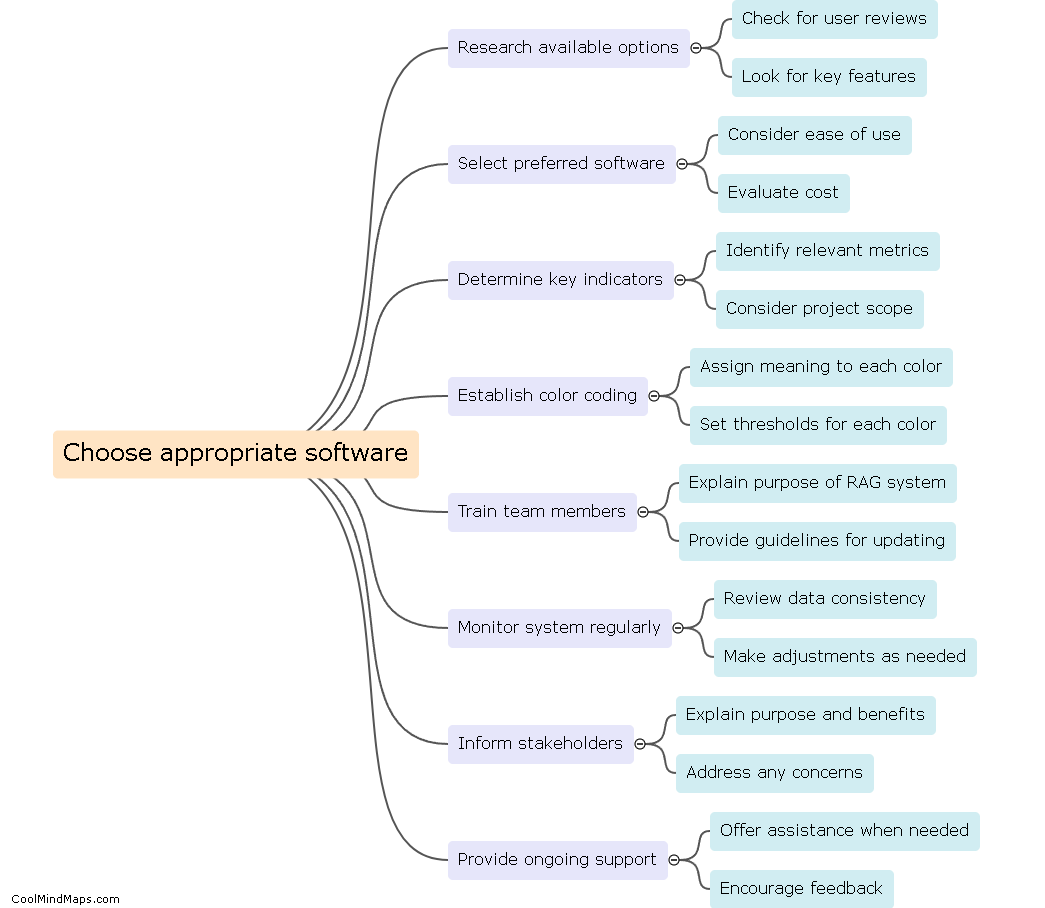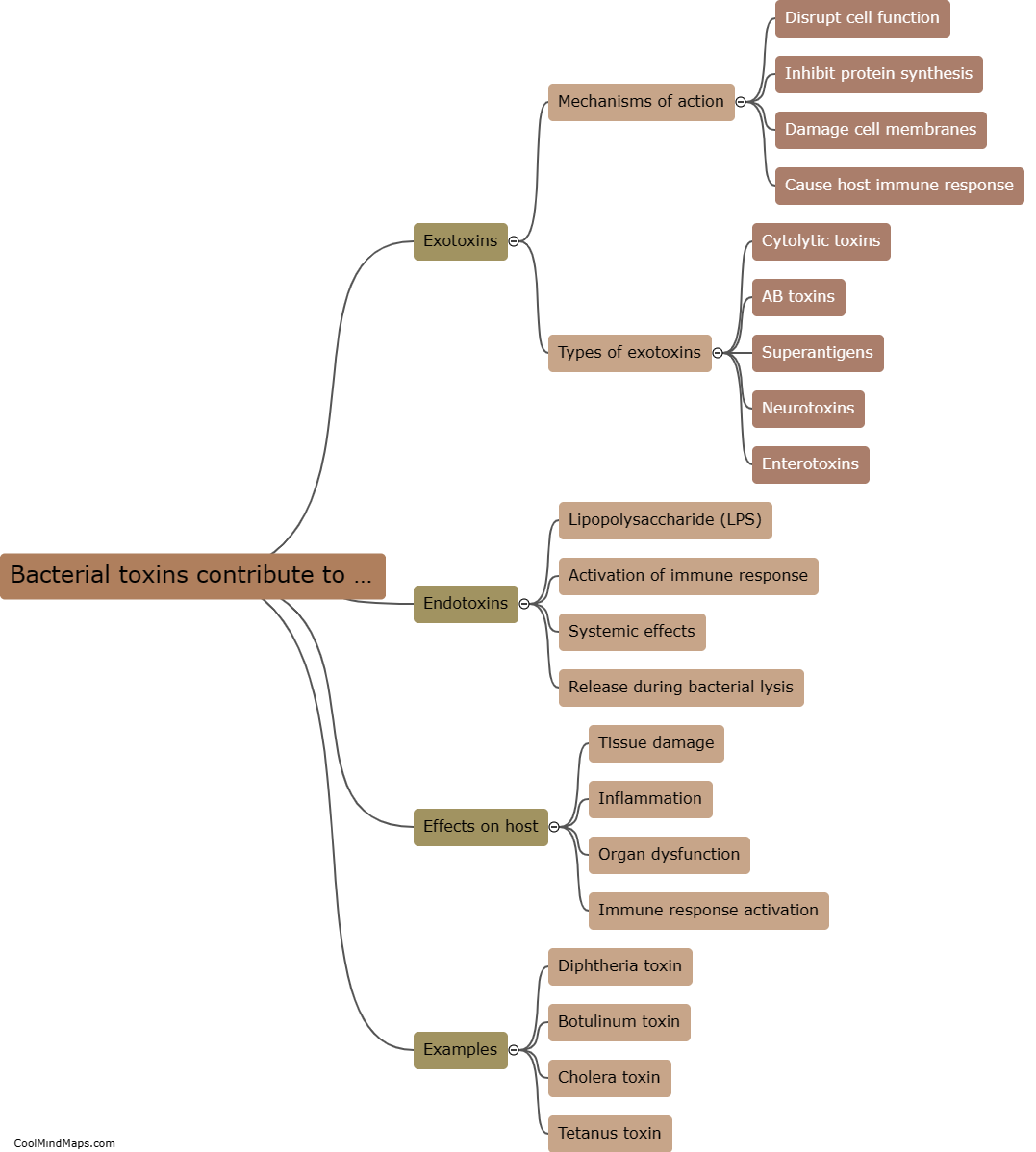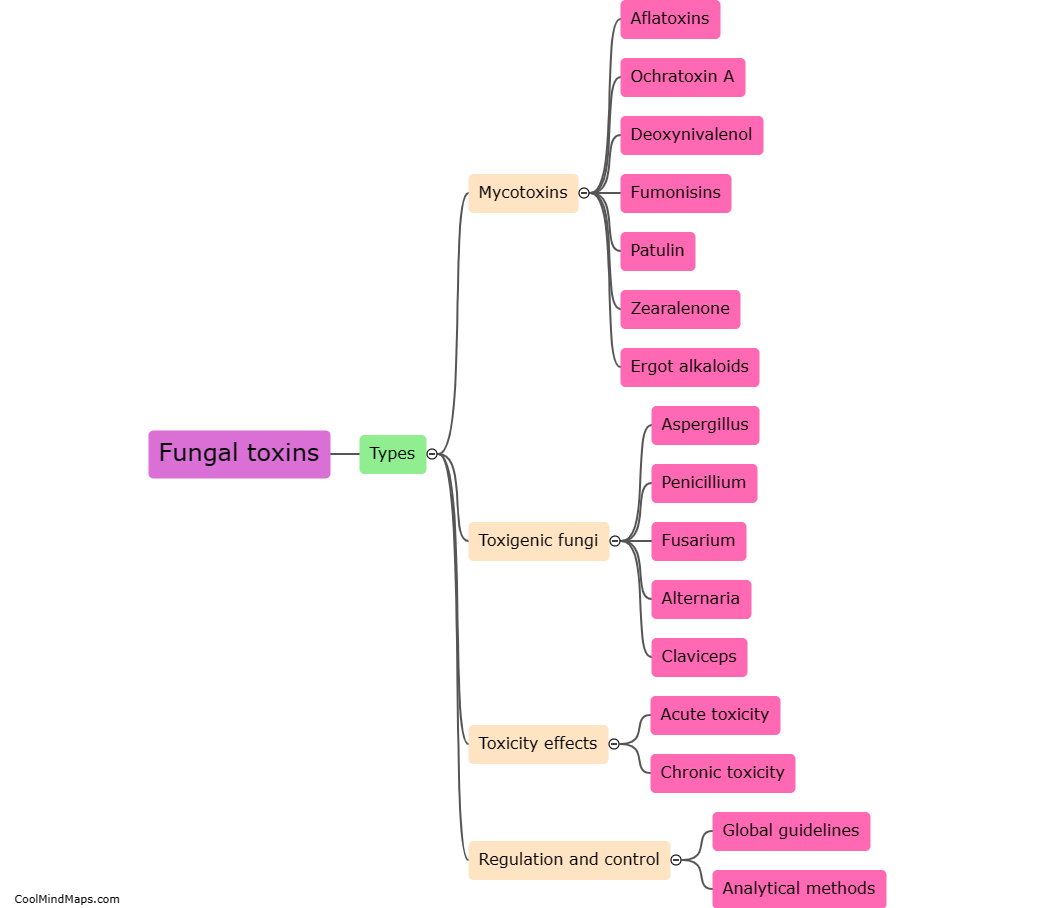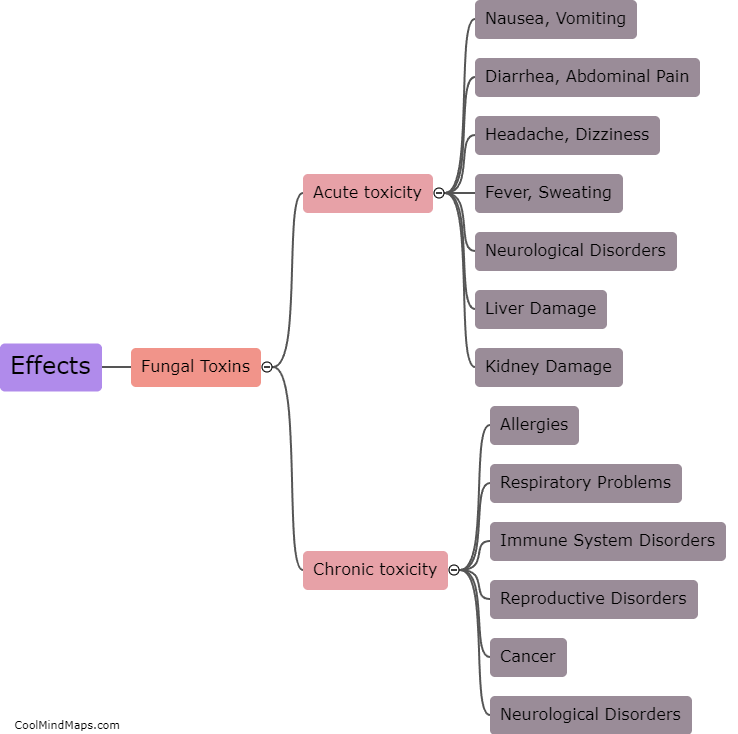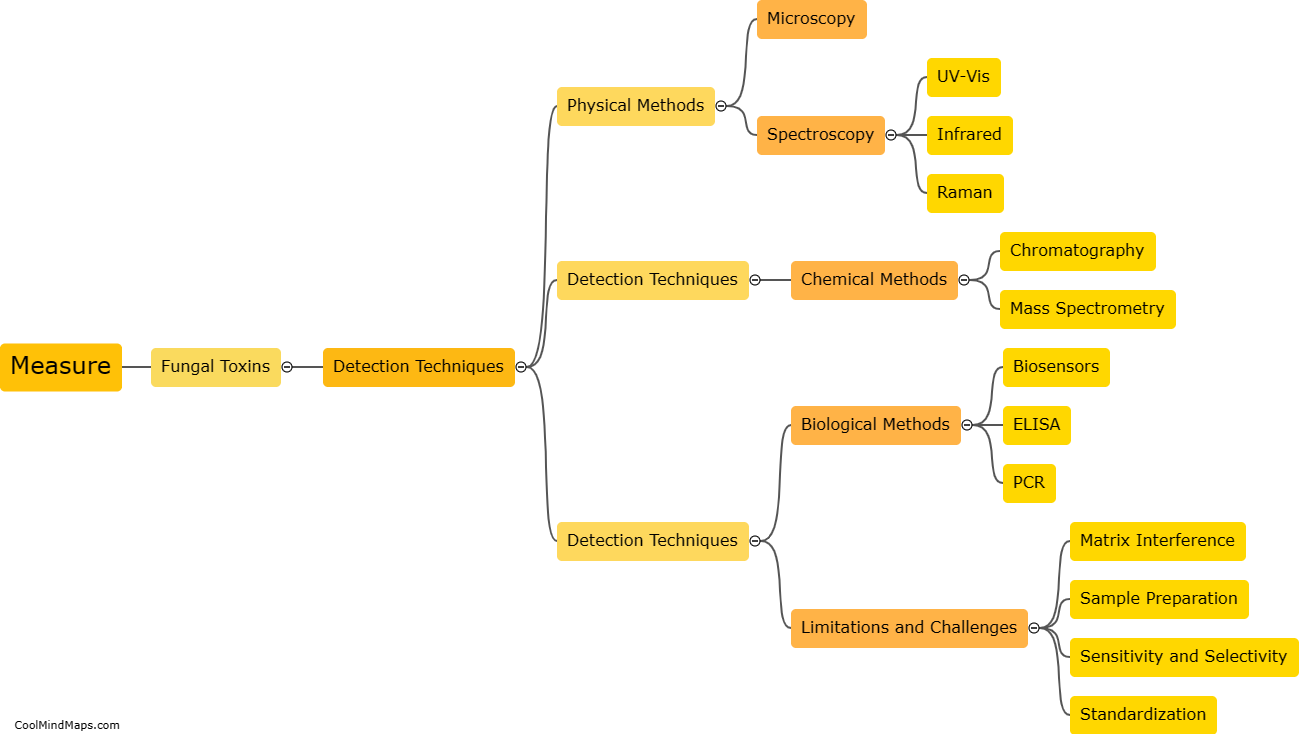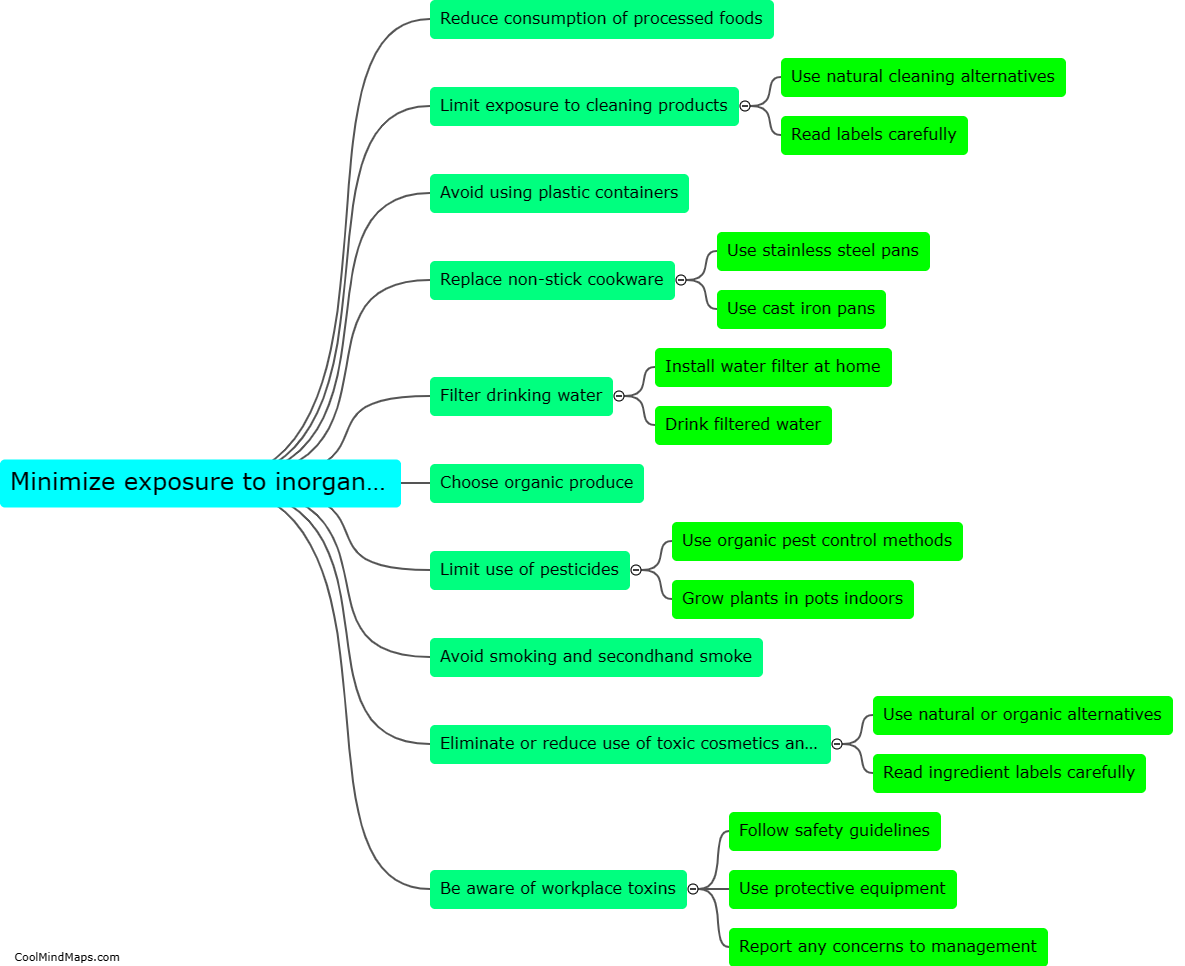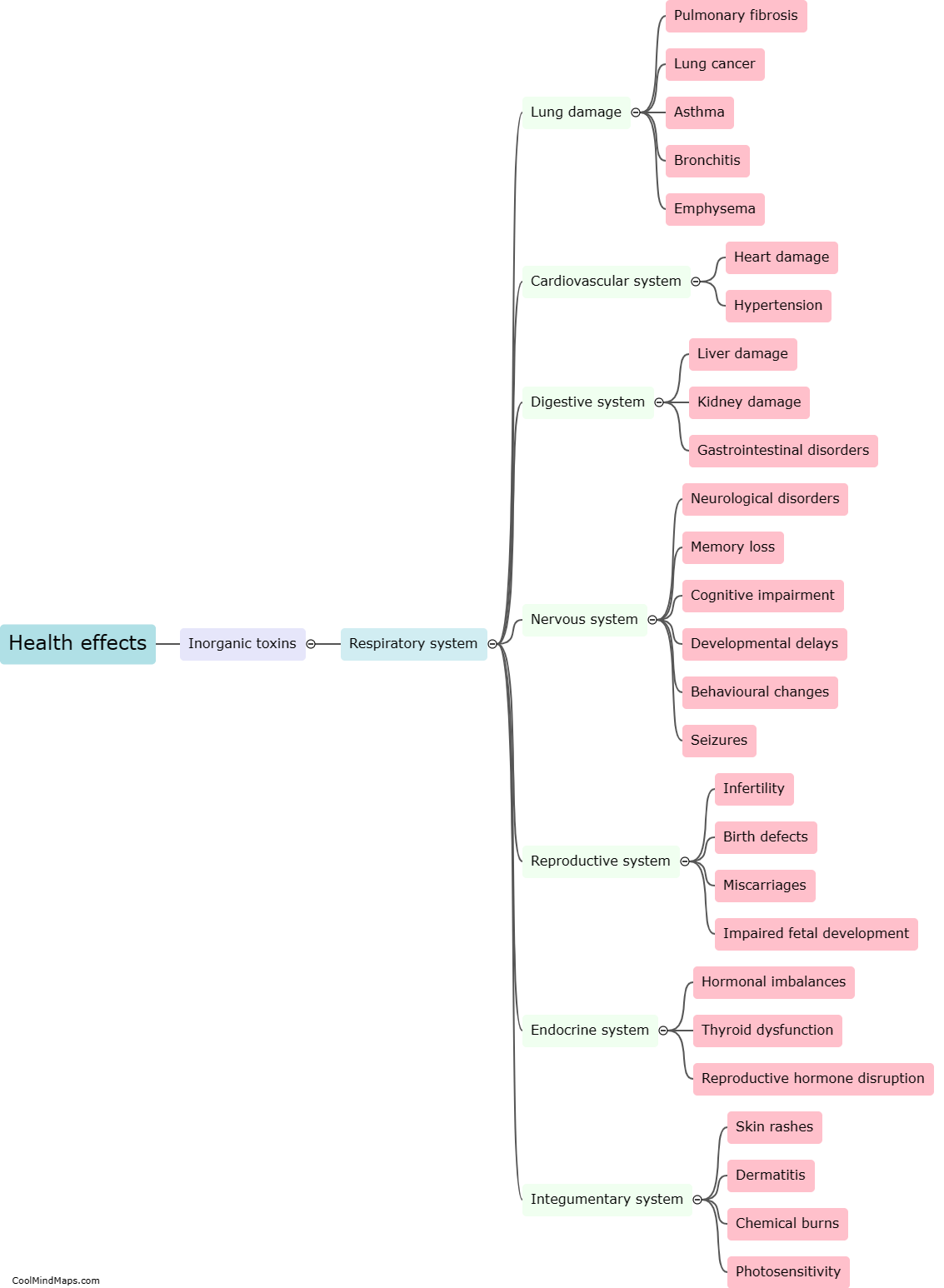What are the main sources of fungal toxins?
Fungal toxins, also known as mycotoxins, are produced by various types of fungi. The main sources of these toxins encompass a wide range of food and agricultural products. One key source is mold-contaminated crops, such as grains, nuts, and seeds. These molds can colonize the crops during cultivation, storage, or processing, producing toxins that can persist through the food chain. Additionally, fungal toxins may also be found in fermented food and beverages, as some fungi can produce mycotoxins during the fermentation process. Moreover, indoor environments can harbor fungal growth on building materials like wallpaper or carpeting, leading to the release of mycotoxins into the air. Overall, understanding and managing the sources of fungal toxins is crucial to ensure food safety and prevent health issues associated with their consumption.

This mind map was published on 3 December 2023 and has been viewed 112 times.
